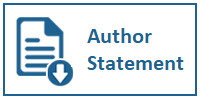THE ANALYSIS OF RICE MASSIVE IMPORTING IN INDONESIA BASED ON MACROECONOMICS, MICROECONOMICS, INTERNATIONAL ECONOMICS AND POLITIC ECONOMICS
DOI:
https://doi.org/10.31937/manajemen.v15i2.3411Abstract
Abstract - Rice is a crucial staple food in Indonesia, and the country's decision to import 3 million tonnes of rice has significant implications for its economy, agriculture sector, and food security. This study aims to analyze the benefits and drawbacks of this massive rice importation through a comprehensive examination of macroeconomics, microeconomics, international economics, and political economics. The main objectives are to provide recommendations for managerial stakeholders and to develop a vision for rice self-sufficiency. The background problems include the potential impact on Indonesia's trade balance, foreign exchange reserves, market consumption, and the socio-economic effects on local farmers. The novelty of this study lies in the lack of adequate research on the enduring effects of extensive rice imports and the need to explore options for achieving a balance between imports and domestic production. The research methods involve a literature review and analysis of scholarly articles and journals, focusing on economic indicators, trade statistics, and agricultural production data. The findings highlight the macroeconomic and microeconomic implications of rice imports, including potential disruptions in the agricultural industry, income distribution, and market dynamics. The conclusion emphasizes the need for comprehensive policies to address the challenges of rice importation and achieve a balance between food security and economic sustainability. The implications of the research underscore the importance of strategic decision-making to harmonize the needs of customers, farmers, and the broader economy, while safeguarding overall economic stability and social welfare.
Keywords: Export; Import; International Economics; Macroeconomics; Microeconomics; Politic Economics; Rice Self-Sufficiency
Downloads
Downloads
Published
How to Cite
Issue
Section
License
Authors retain copyright and grant the journal right of first publication with the work simultaneously licensed under a Creative Commons Attribution-ShareAlike International License (CC-BY-SA 4.0) that allows others to share the work with an acknowledgement of the work's authorship and initial publication in this journal.
Authors are able to enter into separate, additional contractual arrangements for the non-exclusive distribution of the journal's published version of the work (e.g., post it to an institutional repository or publish it in a book), with an acknowledgement of its initial publication in this journal.















